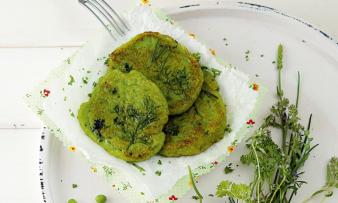First European restaurant to serve cats? from Carnism.org
This restaurant apparently serves cats – and asks the question “Why do we eat some animals but not others?” This video has a surprise ending – keep watching! You can learn more at the site of the creators of this video at the site Beyond Carnism. See also Wikipedia for Carnism.
There is a better Wikipedia page about cat meat and we cite from it here: Cat meat is meat prepared from domestic cats for human consumption. Some countries eat cat meat regularly, whereas others have only consumed cat meat in desperation during wartime or poverty.
Prehistoric human feces have contained bones from the wild cat of Africa. In some cultures of Cameroon, there is a special ceremony featuring cat-eating that is thought to bring good luck. Cats are regularly eaten in West Africa, especially in Ghana, Cote d'ivoire and Togo.
Africa is not the only continent where humans eat cats, they do it in Asia in many countries like Oceania (see Australia), the Americas and Europe! See the different views - also by law. The Jewish and Islamic laws forbid the consumption of cat meat. The Jewish Kashrut disallows the consumption of any terrestrial predators. Some Information about Europe by Wikipedia unter Cat meat:
Switzerland: In Switzerland the private consumption and slaughter of dog and cat meat is permitted though its commercial trade is prohibited by law. A 1993 petition to ban consumption failed with the government declaring the matter a "personal ethical choice."
Denmark: In June 2008, three students at the Danish School of Media and Journalism published pictures of a cat being slaughtered in Citat, a magazine for journalism students. Their goal was to create a debate about animal welfare. The cat was shot by its owner, a farmer, and it would have been put down in any case. The farmer slaughtered the cat all within the limits of Danish law. This led to criticism from Danish animal welfare group Dyrenes Beskyttelse, and death threats received by the students.
United Kingdom: In 18th-century Britain, there are a few records of cats being eaten as a form of entertainment.
Italy: In February 2010, on a television cooking show, the Italian food writer Beppe Bigazzi mentioned that during the famine in World War II cat stew was a "succulent" and well known dish in his home area of Valdarno, Tuscany. Later he claimed he had been joking, but added that cats used to be eaten in the area during famine periods, historically; he was widely criticised in the media for his comments and ultimately dropped from the television network.
Cats were sometimes eaten as a famine food during harsh winters, poor harvests, and wartime. Cat gained notoriety as "roof rabbit" in Central Europe's hard times during and between World War I and World War II. Cat consumption was a stereotype attributed to Vincenzans in Vicenza, Italy.
According to "The Dietetic & Hygienic Gazette" in 1905, Italy cultivates the cat for home consumption as English people raise rabbits. It is to be done on the quiet, however, for in spite of the profit in the business and the demand for the delicacy, the law has to be looked out for, and the Society for the Prevention of Cruelty to Cats is vigilant. Offenses against the law are visited with imprisonment. Cats are raised for the market none the less. Fattened on the finest of milk, a choice specimen will attain the weight of fifteen pounds.
France and Spain: There are recounts of cat being consumed in France's Gallia Norbon region and Spain in the 17th century. During the Siege of Paris, food shortages caused by the German blockade of the city eventually drove the citizens of Paris to turn to alternative sources of food, which included cat meat.
More videos
To understand health and ecology, extensive basic knowledge is required. Here you will find fact-based texts and book reviews.
Due to a lack of knowledge, vegetarians, vegans, and raw foodists often eat unhealthily – for years or even decades. This basic knowledge can prevent this.
The China Study clearly lays out how the current Western diet can be improved to prevent lifestyle diseases. We say: Most important book on nutrition and health
Erb Muesli with Rolled Oats is a vegan (lactose-free), raw muesli. It serves as an especially healthy breakfast and is a good “bread replacement.”
These Cucumber Rolls with “Goat’s Cheese” and Mint Sauce hold together surprisingly well. They are ideal as an appetizer or finger food.
Sun-dried chili peppers and parsley give the savory pea pancakes a special flair. We recommend trying the pancakes with curry.











